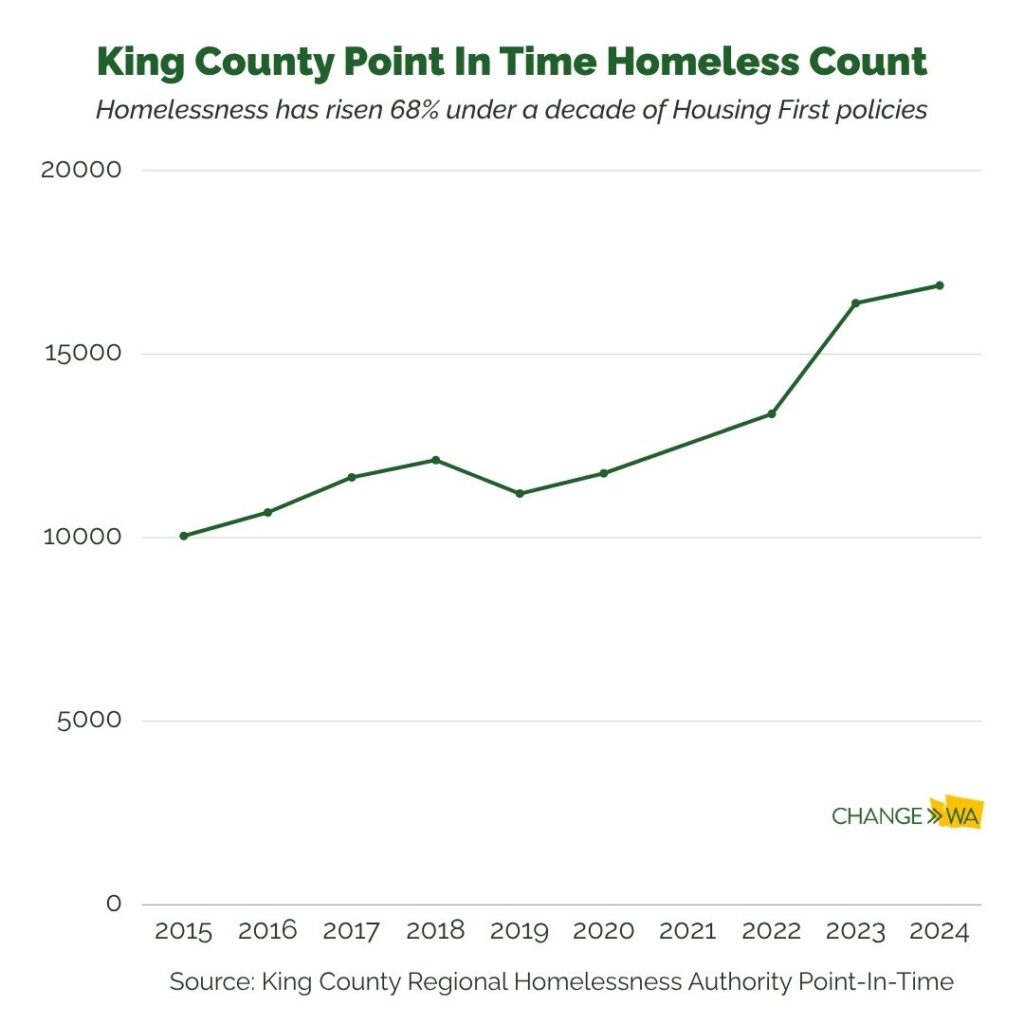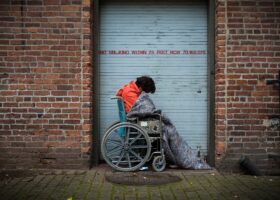Fresh Federal Direction Could Turn the Tide on Homelessness in Washington
August 1, 2025
Last week’s executive order from the Trump Administration firmly declared that the federal government is changing its homeless strategy after more than a decade of disappointing results from Housing First policies. These orders have brought encouragement to those who support more resources for addiction and mental health treatment and angered those who financially benefit from the current system.

On July 24, President Donald Trump signed an executive order which essentially altered three major homelessness strategies:
- Redirects more federal funding to provide addiction and mental health treatment which today is nearly ignored under current Housing First policies.
- Remove federal and legal barriers for local governments and families to involuntarily commit individuals who are harmful to themselves and others.
- Crackdown on the public disorder that is associated with homelessness (urban camping, unsanitary conditions, illicit drug use, and other illegal behaviors).
Many view this as the first step in the dismantling of the expensive Housing First homelessness strategy which the Obama Administration implemented in 2013. Unfortunately, these policies resulted in a record-breaking number of homeless people in the U.S. and has been especially brutal in progressive West Coast cities (Seattle, Portland, San Francisco, and Los Angeles) which have been the strictest followers of the strategy.
The executive order is also relevant because it recognizes that nearly 80% of the homeless self-identify as having serious addiction and/or mental health issues which are hampering their ability to become self-sufficient.
HOUSING FIRST
Housing First began in New York City in the 1990s and initially there was bi-partisan support for the idea that once a homeless individual has stable housing, services could be provided to help the person with addiction, mental health, job training, and other issues.
Yet, as more public money was spent to fund the programs, special interest groups took control. This new “Homeless Industrial Complex” soon realized that it could make more money if homeless individuals became dependent on the growing housing bureaucracy. Many treatment requirements were either ignored or removed. Housing First stopped being about creating physical, mental, and financial stability for those in crisis, and became more about increasing dependency on taxpayer funded services. As a result, homelessness exploded during the past decade.
Housing First programs have become more entrenched in government bureaucracies and in organizations that are dependent on government funding.
- A recent Discover Institute study found that half of the agencies which receive emergency housing funds refuse to submit a report as to what was accomplished (i.e. how many people helped) with the funds.
- In an exclusive interview with ChangeWA, Executive Constantine admitted he had no estimate for how much money he had authorized for homelessness program.
Individually these issues raise concerns about accountability of how limited homelessness resources are spent. Combined, they explain why good government advocates are sounding the alarm that the current system is conducive to large scale corruption and why the homeless population has continued to grow.
HOMELESSNESS CONTINUES TO INCREASE
In 2015 there were 564,708 homeless individuals in the United States. Today after billions spent on Housing First programs there are now 771,480 suffering, a 36.6% increase.
It is even worse at the local level. Washington has seen a 77.7% increase (from 17,760 to 31,554) in the homeless population since the start of the Inslee Administration in 2013. Recent studies have found that two-thirds of our state’s homeless do not have a family connection to the state as many came here due to the low barrier (i.e. they can stay active in their drug addiction) to receive services.
In 2015 there were 10,047 homeless people when then King County Executive Dow Constantine declared homelessness an emergency and pledged to fully fund many Housing First initiatives. Again, after billions spent, the homeless population has grown 68%, to 16,868.
Clearly Housing First is not working and the public’s frustration is growing. A January 2025 survey of 800 Washington voters found that 80% of residents believe homelessness is a serious problem that worsened last year.
BUREAUCRATIC OUTRAGE
It is not shocking that those who profit from the current system will argue strenuously against making changes to the system. The Seattle Times’ top story on Saturday morning was filled with predictable quotes from these people saying the federal actions are “bombastic,” “harmful,” “misguided,” and “obscene.”
While these people might be upset that their taxpayer gravy train may soon be ending, they have no one to blame but themselves and the ineffective homeless strategy they have embraced. The public has repeatedly had their taxes raised to fund the growing Housing First bureaucracy as homelessness continues to increase. The public want their parks, green spaces, and sidewalks clear of encampments. Most of all, they want these people to receive treatment so they can lead productive lives.
A decade of bad results is enough. It is time we provided these people with the treatment help they need.




